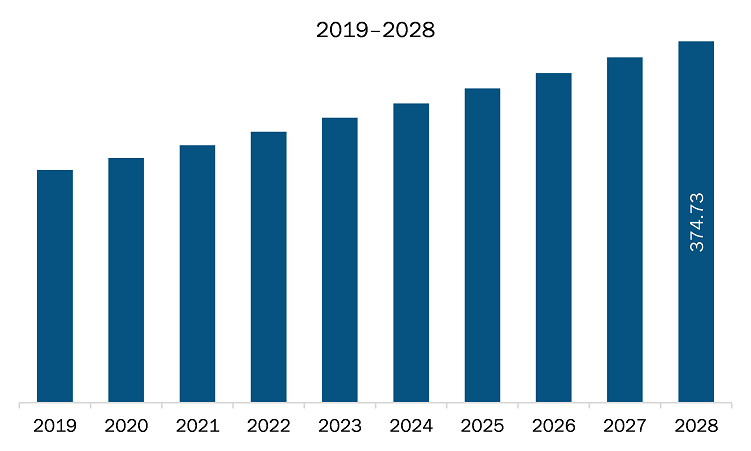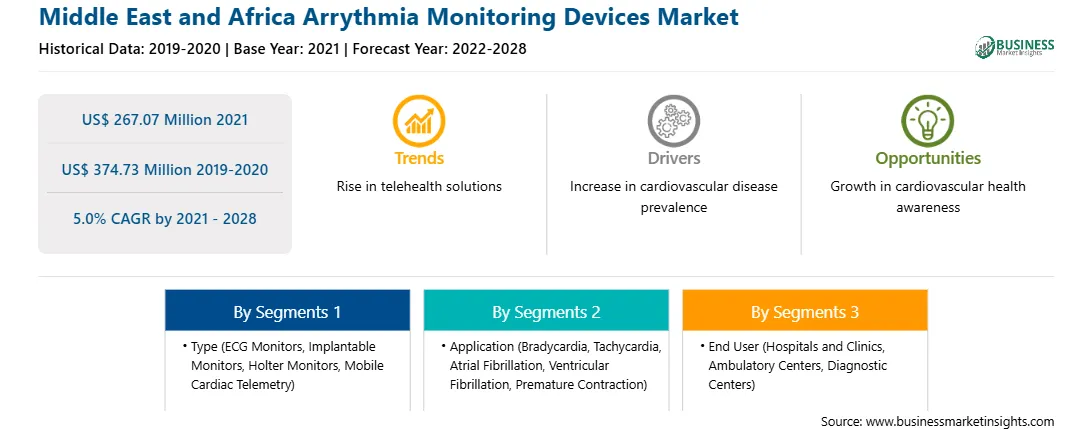The Middle East and Africa arrhythmia monitoring devices market includes the consolidated markets for UAE, Saudi Arabia, South Africa, and rest of Middle East and Africa. In Saudi Arabia, the prevalence of cardiovascular in the country has increased, therefore the government has invested significantly for healthcare, education, and research. The Saudi Heart Association (SHA) in collaboration with the Conference Board of Canada and Amgen Inc., conducted a study showed that 36% of deaths in Saudi Arabia were caused by cardiovascular disease and 13% of disability were contributed by the same. Also, in the study it was estimated that the number of cases will account more of cerebrovascular disease (stroke) and will increase to 150%, with respect to this it will cost near about US$ 1.8 billion. Likewise, ischemic heart disease (heart attack) will increase to 186%. And the heart attack will contribute to increase in costs approximately to US$ 8.0 billion. Like the UAE, in 2017, American College of Cardiology (ACC) and the Saudi Heart Association together has launched a series of aids for physicians to focus on the prevention of cardiovascular disease in Saudi Arabia. Moreover, the healthcare systems are advancing due to the rise in the pilgrimage in the country. The highly advanced healthcare facilities are provided to all citizens, residents, and visitors. The efforts for the best healthcare facilities are being made by the Ministry of Health. Thus, considering the rise in the prevalence of the heart diseases and the healthcare systems of the country, the market for the arrhythmia monitoring is likely to propel in the forecast period
The arrhythmia monitoring devices market in the Middle East and Africa comprises UAE, Saudi Arabia, South Africa, and other GCC. The COVID-19 pandemic has become the most significant challenge in the region. The Middle East has reported around 12 million cases while Africa witnessed 4.5 million cases. Many countries in the region have very less developed and underfunded healthcare systems. Sudden emergence of the virus caused severe pressure on healthcare facilities in the region. Furthermore, shortage of hospital supplies also accelerate the criticality of the condition. During the pandemic, the focus of healthcare professionals was only limited to the COVID management, which substantially hampered the number of other diagnostic procedures and elective surgeries in the region. Moreover, implementation of social distancing policies resulted into limited patients visits to cardiac centers, which drastically impacted the demand and adoption of arrhythmia monitoring devices in Middle East and Africa. Apart from this, a huge population already face a growing burden of non-communicable diseases, making them more vulnerable to the virus. Moreover, economic uncertainties and ongoing conflicts are worsening the condition in the region. For instance, countries such as Syria, Libya, and Yemen are suffering violent conflict and have been unable to implement any public health measures and Iran was in deep economic recession due to the US sanctions. Such factors are restraining the growth of the market in the region. However, launch of coronavirus vaccination programs in several countries will ultimately control the situation in years to come. These efforts to control the spread will ultimately recover and restore the situations post-pandemic.

Strategic insights for the Middle East and Africa Arrythmia Monitoring Devices provides data-driven analysis of the industry landscape, including current trends, key players, and regional nuances. These insights offer actionable recommendations, enabling readers to differentiate themselves from competitors by identifying untapped segments or developing unique value propositions. Leveraging data analytics, these insights help industry players anticipate the market shifts, whether investors, manufacturers, or other stakeholders. A future-oriented perspective is essential, helping stakeholders anticipate market shifts and position themselves for long-term success in this dynamic region. Ultimately, effective strategic insights empower readers to make informed decisions that drive profitability and achieve their business objectives within the market.

| Report Attribute | Details |
|---|---|
| Market size in 2021 | US$ 267.07 Million |
| Market Size by 2028 | US$ 374.73 Million |
| Global CAGR (2021 - 2028) | 5.0% |
| Historical Data | 2019-2020 |
| Forecast period | 2022-2028 |
| Segments Covered |
By Type
|
| Regions and Countries Covered | Middle East and Africa
|
| Market leaders and key company profiles |
The geographic scope of the Middle East and Africa Arrythmia Monitoring Devices refers to the specific areas in which a business operates and competes. Understanding local distinctions, such as diverse consumer preferences (e.g., demand for specific plug types or battery backup durations), varying economic conditions, and regulatory environments, is crucial for tailoring strategies to specific markets. Businesses can expand their reach by identifying underserved areas or adapting their offerings to meet local demands. A clear market focus allows for more effective resource allocation, targeted marketing campaigns, and better positioning against local competitors, ultimately driving growth in those targeted areas.

The arrythmia monitoring devices market in MEA is expected to grow from US$ 267.07 million in 2021 to US$ 374.73 million by 2028; it is estimated to grow at a CAGR of 5.0% from 2021 to 2028. Market consolidations, Changes or shift in technology-related trends encourage players to develop innovative devices. Recent developments in HIPPA-compliant technology have enabled secured data transmission throughout the monitoring period without delays. Emerging technologies are providing effective alternatives for traditional Holter monitors that create alerts for patients with a high risk of cardiac arrhythmia. Hence, continuous remote monitoring capabilities of these devices facilitating long-term, uninterrupted cardiac rhythm management are adding to their popularity. The mobile cardiac telemetry (MCT) system is an innovative product that assist in monitoring heart conditions of cardiac patients. Patients carry the tiny sensor and monitor throughout the day, and whenever, a cardiac event occurs, MCT sends the data to a central system for analysis and reaction. The system generates a report and shares it with the patient's physician, along with graphs and trends, for further actions. The abilities of MCT systems to analyze every heartbeat with little interference to the patient's normal days and to initiate an immediate emergency response as needed make them one of the most attractive choices cardiac monitoring. This is bolstering the growth of the arrythmia monitoring devices market.
In terms of type, the holter monitors segment accounted for the largest share of the MEA arrythmia monitoring devices market in 2020. In terms of application, the atrial fibrillation segment held a larger market share of the arrythmia monitoring devices market in 2020. Further, the hospitals and clinics segment held a larger share of the market based on end user in 2020.
A few major primary and secondary sources referred to for preparing this report on arrythmia monitoring devices market in MEA are company websites, annual reports, financial reports, national government documents, and statistical database, among others. Major companies listed in the report are Abbott; General Electric Company; Hill-Rom Holding Inc.; Koninklijke Philips N.V.; Medtronic; OSI Systems, Inc
The Middle East and Africa Arrythmia Monitoring Devices Market is valued at US$ 267.07 Million in 2021, it is projected to reach US$ 374.73 Million by 2028.
As per our report Middle East and Africa Arrythmia Monitoring Devices Market, the market size is valued at US$ 267.07 Million in 2021, projecting it to reach US$ 374.73 Million by 2028. This translates to a CAGR of approximately 5.0% during the forecast period.
The Middle East and Africa Arrythmia Monitoring Devices Market report typically cover these key segments-
The historic period, base year, and forecast period can vary slightly depending on the specific market research report. However, for the Middle East and Africa Arrythmia Monitoring Devices Market report:
The Middle East and Africa Arrythmia Monitoring Devices Market is populated by several key players, each contributing to its growth and innovation. Some of the major players include:
The Middle East and Africa Arrythmia Monitoring Devices Market report is valuable for diverse stakeholders, including:
Essentially, anyone involved in or considering involvement in the Middle East and Africa Arrythmia Monitoring Devices Market value chain can benefit from the information contained in a comprehensive market report.